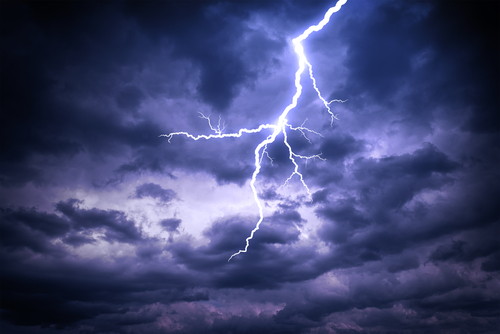From the AmeriFlux-Community listserv. Thanks to Joydeep Bhattacharjee for asking, and David for this answer
Joydeep: How do PIs across the network protect their equipment on towers against damage from lighting?
David: This question ought to unleash a flood of information and opinions, since lightning protection of sensitive instruments is a black art, similar to fortune telling. From my investigations 15 years ago, I’ve synthesized the following general guidelines:
1) Direct hits on a tower are likely to damage almost all sensors and loggers, whether a separate ground cable (from top to earth ground) is provided, or you just use the tower for the path to ground. Typical lighting energies are high enough that the proximity of a ground cable to the tower will bleed energy through the whole structure in most cases.
2) Consequently, the best strategy is to prevent direct strikes. This is best done by mounting “many” sharp points at the top, which tend to ionize the air and prevent large differences in potential between the cloud and the tower. Commercial devices (spline ball ionizers) are available, but pricey.
3) Another very effective strategy is to build what amounts to a shield above the tower, routed to ground well away from the tower. These are also available, but even more expensive, and probably too disturbing to the natural airflow, etc. that you want to preserve at the tower. A common example is that areas under power lines are cited as being “safe”.
4) Two other types of protection are aimed at improving the grounding. These are large, buried rods extending radially out from the tower, and chemically enhanced grounds (also both expensive). As far as I could tell, these don’t discourage strikes, they just ensure a good ground, and if the tower is still nominally part of the path, sensors would still fry (I think).
5) There are also devices to isolate instruments from the tower (tranzorbs, e.g.), installed at the senor leads, but again may not shield against a full-on strike, as much as prevent damage from nearby strikes (surges).
My anecdotal contribution is this: Our tower is in a somewhat lightning-prone area (Rocky Mtn. foothills west of Denver), although surrounding peaks tend to take most of the hits. In 1999, not wanting to spend big $ on a spline ball ionizer, I bought a $12 steel chimney brush, bent all the bristles into a spherical pattern, and mounted it to the tower top. So far, we haven’t suffered any damage from lightning.


No Comments
Be the first to start a conversation